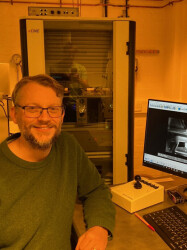BibTex format
@article{Vanstone:2022:1367-2630/ac608b,
author = {Vanstone, A and Gartside, JC and Stenning, KD and Dion, T and Arroo, DM and Branford, WR},
doi = {1367-2630/ac608b},
journal = {New Journal of Physics},
title = {Spectral-fingerprinting: microstate readout via remanence ferromagnetic resonance in artificial spin systems},
url = {http://dx.doi.org/10.1088/1367-2630/ac608b},
volume = {24},
year = {2022}
}

